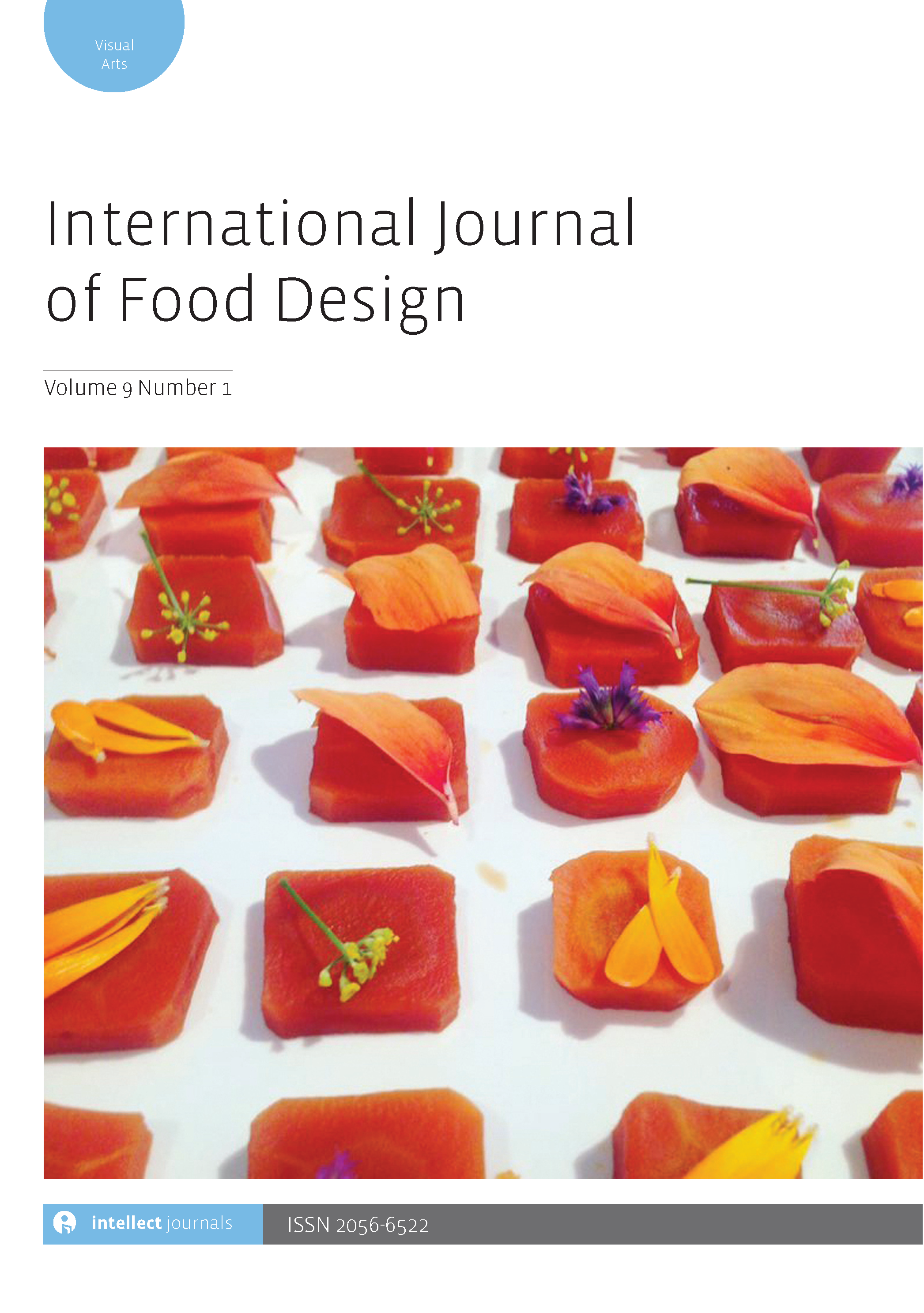-
oa Émotions à la carte: Exploring emotional paradoxes through edible DIY-Materials for product design1
- Source: International Journal of Food Design, Volume 4, Issue 2, Aug 2020, p. 139 - 153
-
- 31 May 2019
- 13 Mar 2020
- 01 Aug 2020
Abstract
The exploration of emotions has become a fundamental aspect of product design. Researchers in the design field have proposed approaches to Materials Experience that supports emotional exploration. The following article aims to demonstrate how, by experimenting with edible Do-It-Yourself-Materials, designers can tackle a deeper conceptualization of product development. A methodology is proposed to explore emotions through different design techniques with the use of edible materials. Three projects are analysed to understand the different opportunities to use these types of materials to create emotional, tangible experiences. This exercise sets a scenario for product designers interested in using emotions through edible material experimentation and achieving a more meaningful product development, by including emotional design in the project.



